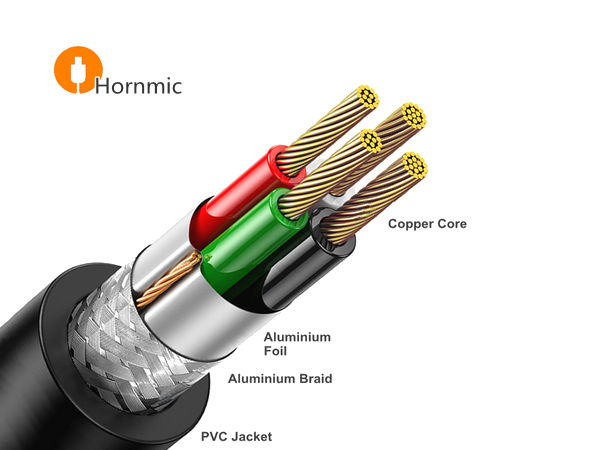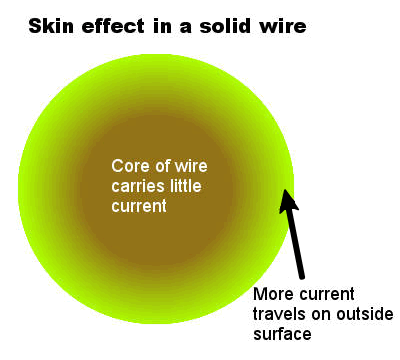Why is the copper core in the wire divided into many thin wires instead of one
Time:2023-09-22
Views:480

Why is the copper core in the wire divided into many thin wires instead of one?
In the USB cable industry, there are requirements for conductors used to produce cables. Multi strand wires are called "twisted wires" in the cable industry.
The characteristics of twisted wire products:
1. Good softness. When the stranded wire is bent, the compressed part under stress slides toward the tensile part under stress. The external bending force only needs to overcome the bending stress of the single wire and the friction force between the single wires. If a single solid conductor with the same section needs to overcome the internal tensile stress and the external compressive stress at the same time, it is easy to wrap in circles.
2. Good reliability. Once a single conductor is affected by the process and production equipment, the whole conductor will be scrapped, while the stranded conductor is composed of multiple single wires. Even if one of the single wires is poorly processed, the overall performance will not be degraded.
3. High strength. Compared with a single conductor, if only one thick copper wire is used for the stranded wire of the same section, it is easy to break when bending in the process of use, and it is divided into many thin copper wires, so the toughness is strengthened.

4. The heat dissipation performance is good. The current flow will cause the conductor to heat. The heat dissipation capacity has a great relationship with the surface area of the conductor. The heat dissipation performance of multiple strands is much better than that of single strand.
5. The last reason is that the current has "skin effect", which refers to the phenomenon that when alternating current passes through the conductor, the current will concentrate on the surface of the conductor. When the current is conducted in the conductor, it will be concentrated in the surface layer of the conductor, rather than evenly distributed in the cross-sectional area of the whole conductor. If the conductor is too large, the charge is concentrated on the surface of the conductor, and the actual charge flowing inside is much less than the charge on the surface, the internal copper material is a bit wasted. Making multiple thin copper wires with the same area can greatly improve the conductive efficiency and save copper materials. Skin effect will also increase the resistance of the conductor and increase its loss power.
Therefore, we generally use twisted wires in USB cable production to maximize the performance of copper wires at the lowest cost and meet the comprehensive requirements of products for electrical performance, EMI and life.
Here we will talk about the "skin effect" in additional:

The electric field drives the electrons to move, that is, the current. When the current flows, a magnetic field will be formed around it. According to the Ampere‘s right-hand rule, if M refers to the direction of the current, the direction of the magnetic field is the bending direction of the other four fingers, and its strength is the strongest in the center, and the farther away from the center, the weaker (inversely proportional to the square of the distance). When the current changes, the magnetic field intensity also changes, and the changed magnetic field will form a reverse electric field (Lenz law). In the same way, the variation of the central magnetic field of the conductor is the largest, and the reverse electric field is also the largest. In this way, the electric field density in the center of the conductor is far less than the outside, that is, the current density in the center of the conductor is far less than the outside, forming a skin effect. From the above principle description, it can be known that:
• the higher the frequency, the greater the instantaneous change of the magnetic field, and the more obvious the skin effect.
• the smaller the resistivity, the easier it is to generate reverse current, and the more obvious the skin effect.
• the greater the permeability of the conductor, the greater the instantaneous change of the magnetic field, and the more obvious the skin effect.
So called skin depth δ That is, the depth at which the current density decreases to 36.8% of the surface current density.

From the above table, it can be seen that from the surface to the δ In depth, the accumulated current has accounted for 98%, and up to 10 δ There is almost no current within the depth. It is easy to understand why this phenomenon is called "skin effect" in the above table. In addition, if the skin depth is very thin (or the conductor is relatively thick), the effect of using tubular conductor and solid rod conductor is exactly the same.
By HornmicLink_Bob Kuo @230922 09:58











